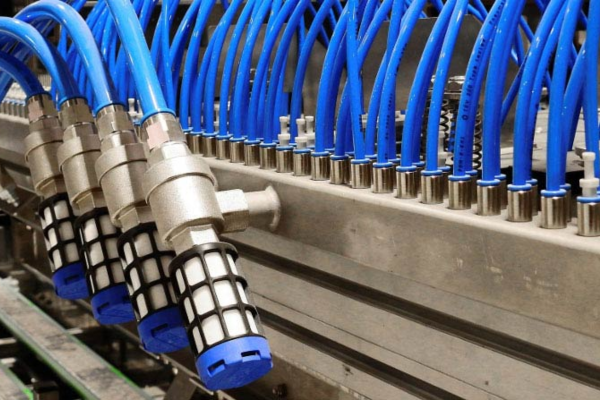
Pneumatic piping work involves the design, installation, and maintenance of piping systems that transport compressed air or other gases for various industrial applications. Pneumatic systems are commonly used in manufacturing, automation, and other industries to power machinery, control processes, and operate pneumatic tools. Here are the key aspects of pneumatic piping work
Piping Layout: Designing the layout of the pneumatic piping system, considering factors such as pressure requirements, flow rates, distance, and the specific requirements of the equipment or processes being served.
Piping Materials: Selecting suitable materials for the pneumatic piping system based on the specific application, pressure levels, and compatibility with the gases being transported. Common materials used include stainless steel, copper, aluminum, and various types of plastics.
Sizing and Pressure Drop: Determining the appropriate pipe diameter and evaluating pressure drop along the piping system to ensure efficient and reliable operation. This involves considering factors like flow rates, pipe lengths, fittings, and friction losses.
Pipe Routing: Installing the pneumatic pipes according to the designed layout, taking into account factors such as space constraints, safety requirements, and accessibility for maintenance.
Pipe Jointing: Utilizing suitable methods for joining the pneumatic pipes, such as threaded connections, compression fittings, push-to-connect fittings, or welding (for certain materials). Ensuring secure and leak-free connections are essential for the system's performance and reliability.
Supports and Hangers: Installing appropriate supports, hangers, and brackets to securely fasten the pneumatic pipes and prevent sagging or excessive movement that could lead to stress or damage to the system.
Valves and Fittings: Installing valves, connectors, couplings, and other fittings necessary for the proper functioning of the pneumatic system. This includes control valves, pressure regulators, check valves, quick-connect couplings, and filters.
Air Treatment: Incorporating air treatment components like filters, lubricators, and dryers to remove contaminants, control moisture, and ensure the quality of the compressed air supplied to the system.
Manifolds and Distribution: Designing and installing manifolds or distribution systems to efficiently distribute compressed air to different equipment or processes within the facility.
Pressure Relief and Safety Devices: Including pressure relief valves and safety devices to protect the pneumatic system from overpressure situations, ensuring safe operation and preventing damage to the equipment or piping.
Leak Detection: Implementing mechanisms for detecting and addressing leaks in the pneumatic piping system, as leaks can result in energy wastage, reduced system performance, and potential safety hazards.
Regular Inspections and Maintenance: Conducting periodic inspections, maintenance, and testing of the pneumatic piping system to identify and address any issues promptly. This includes checking for leaks, inspecting fittings, verifying pressure levels, and ensuring proper operation of control valves and other components.
